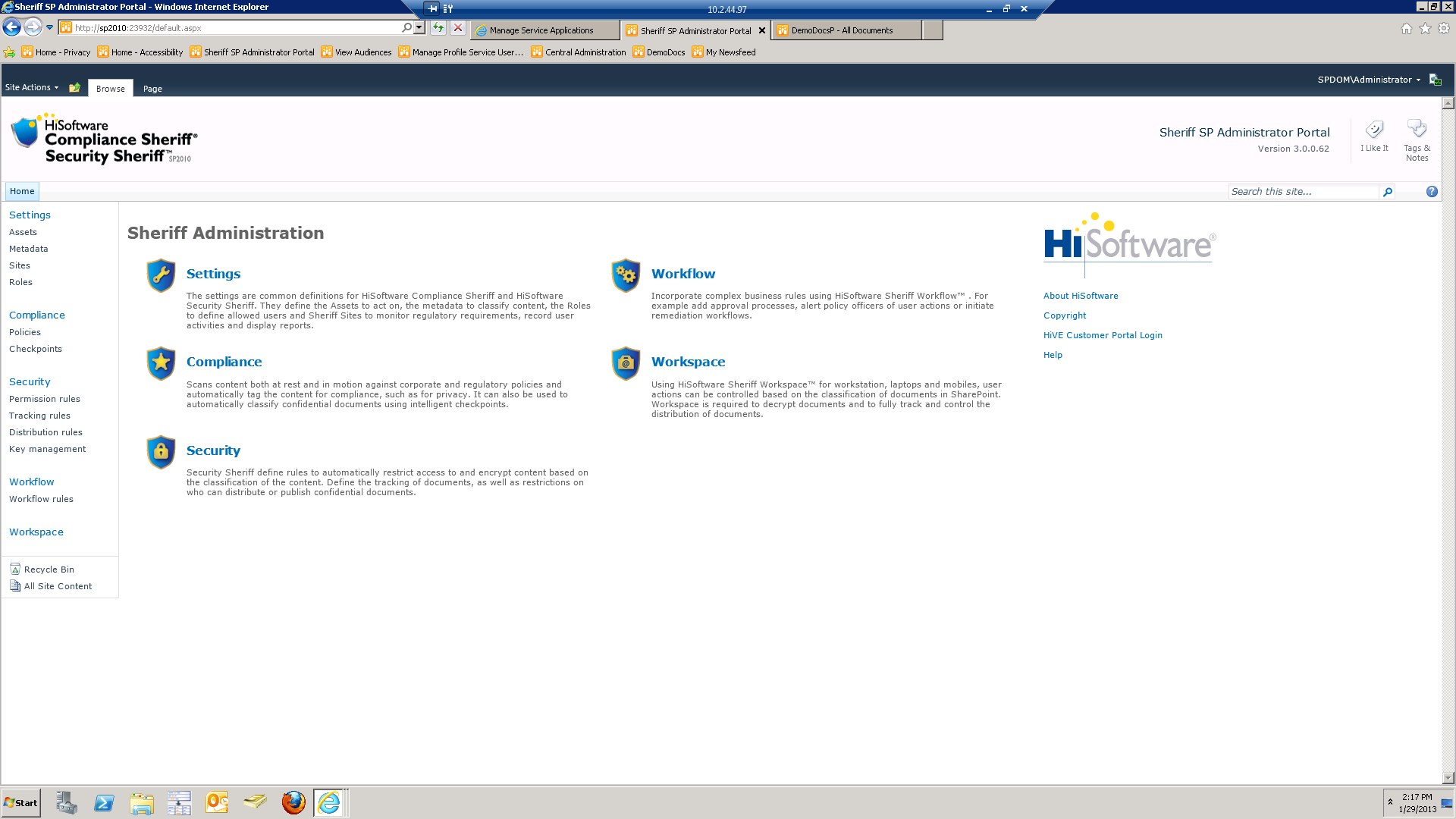HiSoftware, a leading provider of compliance and security solutions for SharePoint, today announced the release of HiSoftware Security Sheriff SPVersion 3.0 for SharePoint, featuring new and enhanced features for content security, encryption, tracking and asset management. HiSoftware will showcase the latest release of Security Sheriff SP in booth #22 at the European SharePoint Conference 2013, February 4-8 in Copenhagen, Denmark.
Alan Pelz-Sharpe, research director – Content and Collaboration at 451 Research commented, “As organizations look to consolidate and deploy on lower-cost platforms, SharePoint continues to be pervasive across global organizations. Though SharePoint itself provides some security features, for many buyers this is not enough. They have a need for much deeper, more granular and auditable security capabilities to ensure that enterprise information stays within the enterprise and is not accessed inappropriately.”

Securing SharePoint Content at the Document Level
HiSoftware Security Sheriff SP handles security and access at the document level using HiSoftware’s secure metadata process within SharePoint. This enables organizations to ensure that only authorized personnel, not even site administrators unless required, access individual documents regardless of where those assets reside. Version 3.0 includes enhancements in the areas of asset management, document tracking and encryption.
Security Sheriff SP is part of the HiSoftware Sheriff Suite of SharePoint solutions, which also includes HiSoftware Compliance Sheriff® SP. Together these solutions help organizations manage and automate compliance with policies for content security, compliance and privacy.
“I always say the best thing about SharePoint is you can put anything in it, and the worst thing about SharePoint is you can put anything in it. Organizations can now mitigate the dichotomy they are experiencing as they balance an increasingly social collaborative environment with those of organizational security,” said Kurt Mueffelmann, president and CEO, HiSoftware. “Security Sheriff SP resolves the content issues through metadata-driven, item-level security to secure sensitive content in SharePoint in accordance with polices. Organizations can collaborate with confidence to leverage their SharePoint investment and mitigate risk. It also features a rich API that can support mobile devices including iPads.”
Version 3.0 of Security Sheriff SP and Compliance Sheriff SP features a series of new capabilities, including:
• Asset Management – Distinguish between different types of site collections to make policy management easier among various business groups and sites.
• Audit and log events in addition to tracking – More granular tracking allows users to audit and log lifecycle events pertaining to a document using Sheriff metadata’s distribution, deletion, encryption/decryption and classifications. Security officers can create and view reports using Microsoft’s SQL Server Reporting Services (SSRS).
• Encryption Key Management (EKM) – Security Sheriff now supports customer generated encryption keys, in addition to the product’s native encryption functionality. EKM allows the customer to control the encryption keys that will be used to encrypt and decrypt documents.
• Scan lists, list attachments and events such as calendars for policy violations in addition to SharePoint document libraries and sites.
• Mandatory Metadata – Ensures that items added into an Asset are classified using pre-defined Sheriff metadata classifications upon upload. Additionally, classifying the item can trigger various security activities such as setting item-level permissions, encryption or workflows, based on the value of the metadata selected.
• Intelligent Checkpoints – Allow users to set the priority of and weight result values for risk tolerance using “Intelligent Checkpoints” and use regular expressions when defining checkpoint rules and mapping scan results. This allows users to define more flexible and powerful rules, and automatically classify content based on sensitivity during a policy scan.
• Asset Based Conditions – All rules (permissions, tracking, distribution and workflow) can now be defined for a specific Asset instead of the whole Farm. For example, it allows different permissions to be set on Assets used by different departments or divisions.





